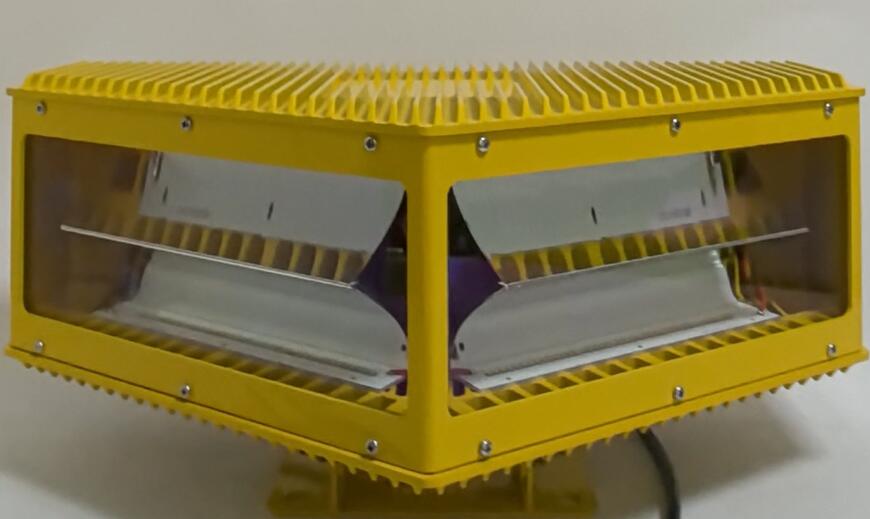Industrial structures such as chimneys dominate the skyline in many urban and industrial zones. These towering constructs, vital for numerous operations, pose potential risks to aviation when not properly marked. Among the key solutions is the aviation lamp for chimney applications, a safety device designed to enhance visibility and prevent airspace incidents. This article delves into the importance, functionality, and advancements of aviation lamps for chimneys while highlighting best practices for their implementation.
Why Aviation Lamps for Chimneys Are Essential
Chimneys are often among the tallest structures in their vicinity. Their substantial height and slim profiles make them difficult to detect during low-visibility conditions, such as fog, rain, or at night. The installation of an aviation lamp for chimney structures addresses this critical challenge, ensuring they are easily recognizable by pilots.
The use of aviation lamps is not merely a precaution but a regulatory mandate in many regions. Authorities such as the International Civil Aviation Organization (ICAO) and Federal Aviation Administration (FAA) have established strict guidelines for marking tall structures, including specifications for lighting intensity, color, and placement. Compliance not only reduces risk but also ensures operational integrity within airspace systems.

Features That Define an Effective Aviation Lamp for Chimney Applications
Modern aviation lamps for chimneys are engineered with advanced technologies to ensure long-term functionality and reliability. Below are the key features that distinguish high-quality models:
High Visibility Lighting
Aviation lamps are designed to emit bright red or white light that can be easily seen from great distances. Many models use LEDs, which provide superior brightness, energy efficiency, and longevity compared to traditional bulbs.
| aviation lamps for chimneys | SDER5 |
Weather-Resistant Construction
Positioned at significant heights, chimneys expose lamps to harsh environmental conditions. Aviation lamps must withstand wind, precipitation, temperature fluctuations, and corrosive elements such as industrial emissions. Durable materials like stainless steel and weather-sealed casings are critical for this purpose.
Energy Efficiency
As sustainability becomes a growing concern, energy-efficient aviation lamps are increasingly popular. LED-based models consume minimal power and have extended lifespans, reducing energy costs and maintenance requirements.
Automatic Light Control
Advanced lamps feature sensors that adjust brightness according to ambient light. During the day, these lamps emit a dimmer light, conserving energy, while at night or in foggy conditions, they increase brightness to ensure optimal visibility.
Integrated Monitoring Systems
Some aviation lamps come with smart monitoring systems that alert operators to performance issues, such as power outages or lamp failures. These features enhance reliability and reduce downtime.
Installation Considerations for Aviation Lamps on Chimneys
To maximize the effectiveness of an aviation lamp for chimney installations, proper placement and adherence to guidelines are paramount. Key considerations include:
Positioning
Aviation lamps must be installed at the highest point of the chimney to ensure maximum visibility. For exceptionally tall chimneys, additional lamps should be placed at intermediate levels to enhance visibility from all angles.
Secure Mounting
High-altitude installations require secure mounting systems to prevent dislodgement due to strong winds or vibrations. Specialized brackets and fixtures are often used to ensure stability.
Power Supply Options
Depending on the location, aviation lamps can be powered by the grid, solar panels, or hybrid systems. Solar-powered lamps are particularly advantageous for remote chimneys, as they eliminate the need for complex wiring.
Maintenance Access
Chimney installations should include access provisions for regular maintenance. Inspection schedules should be followed to clean lenses, check electrical connections, and replace components as needed.
Challenges in Aviation Lamp for Chimney Applications
Despite their importance, aviation lamps face unique challenges:
Harsh Environments
Chimneys often emit pollutants and heat, which can degrade the materials and performance of aviation lamps. Manufacturers must develop lamps with enhanced resistance to these conditions.
Remote Locations
Many industrial chimneys are located in areas with limited infrastructure. In such cases, solar-powered lamps with minimal maintenance requirements become indispensable.
Compliance Costs
High-quality aviation lamps that meet stringent regulatory standards can be expensive. However, compromising on quality increases risks and can lead to greater long-term costs.
Advancements in Aviation Lamps for Chimneys
Technological innovations are driving significant improvements in aviation lamps for chimney applications. Among these advancements are:
IoT-Enabled Lamps
Internet of Things (IoT) technology allows aviation lamps to connect to centralized systems for real-time monitoring and control. This ensures instant alerts for failures and remote adjustments to lighting settings.
Renewable Energy Integration
The use of solar-powered aviation lamps is becoming more widespread. New designs incorporate high-capacity batteries and efficient photovoltaic cells to ensure uninterrupted performance even in low sunlight conditions.
Dual-Purpose Designs
Some aviation lamps now combine safety lighting with aesthetic features. For example, LED systems can create dynamic lighting effects that improve both visibility and the visual appeal of industrial sites.
Longer Lifespans
Advanced materials and better engineering have resulted in lamps with extended operational lifetimes, reducing the frequency of replacements and associated costs.
Benefits of Investing in Quality Aviation Lamps for Chimneys
Industries that prioritize the installation of robust aviation lamps on chimneys reap numerous benefits:
Enhanced Safety
Clear marking of chimneys significantly reduces the risk of collisions, ensuring the safety of pilots and industrial operations.
Regulatory Compliance
High-quality aviation lamps help industries meet legal requirements, avoiding penalties and reputational damage.
Cost Efficiency
While the initial investment may be higher, durable and energy-efficient lamps lower maintenance and energy costs over time.
Sustainability
Eco-friendly models that use LEDs and solar power contribute to reduced carbon footprints, aligning with global sustainability goals.
The aviation lamp for chimney applications is a cornerstone of industrial safety and airspace management. By ensuring the visibility of towering structures, these lamps prevent accidents and promote compliance with aviation standards. As technology continues to evolve, aviation lamps are becoming smarter, more efficient, and environmentally friendly.
Industries must view the installation and maintenance of aviation lamps not just as a compliance measure but as a commitment to safety, efficiency, and sustainability. With thoughtful investment and adherence to best practices, aviation lamps for chimneys can illuminate the path to a safer future for both industries and aviation.